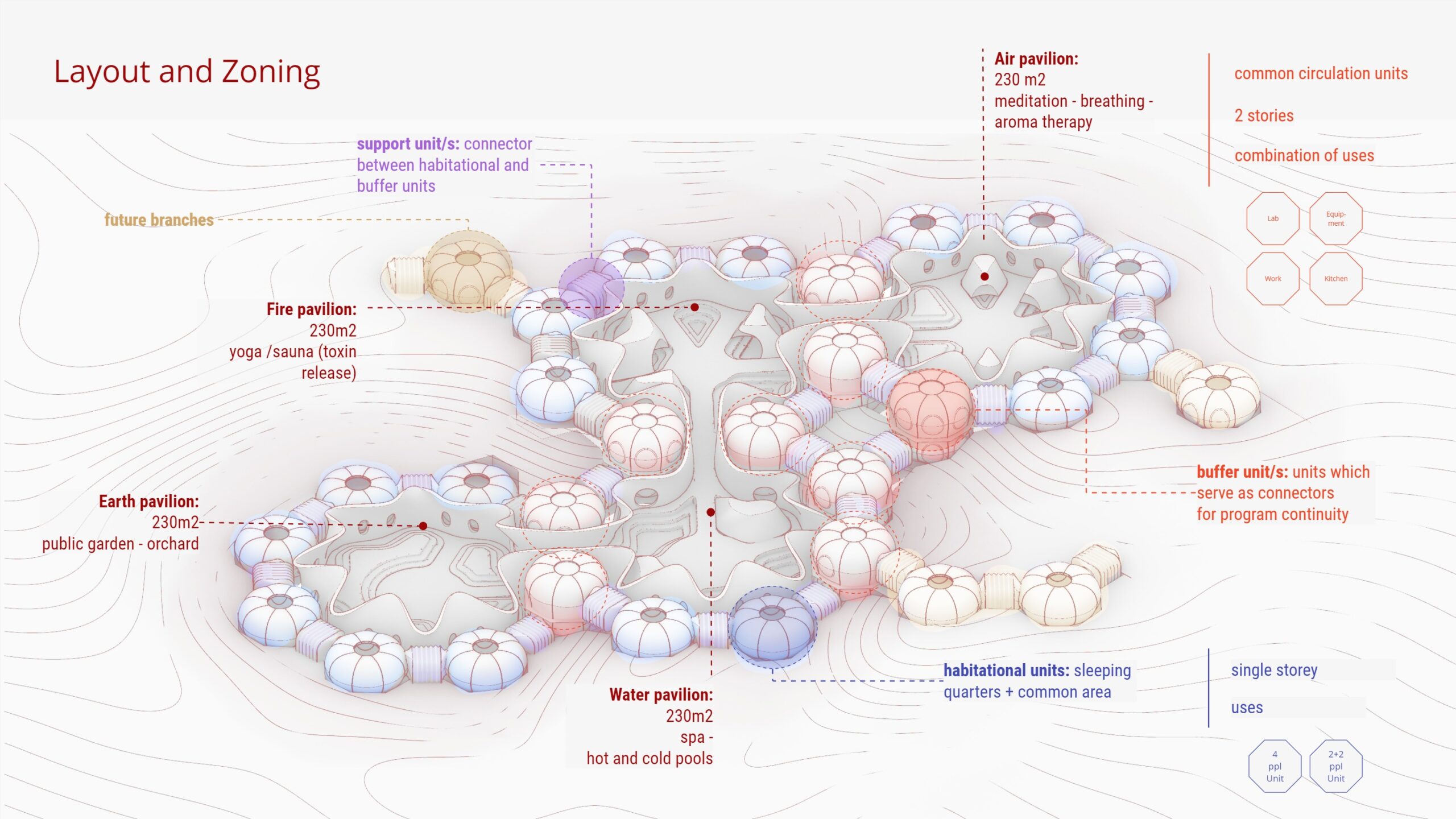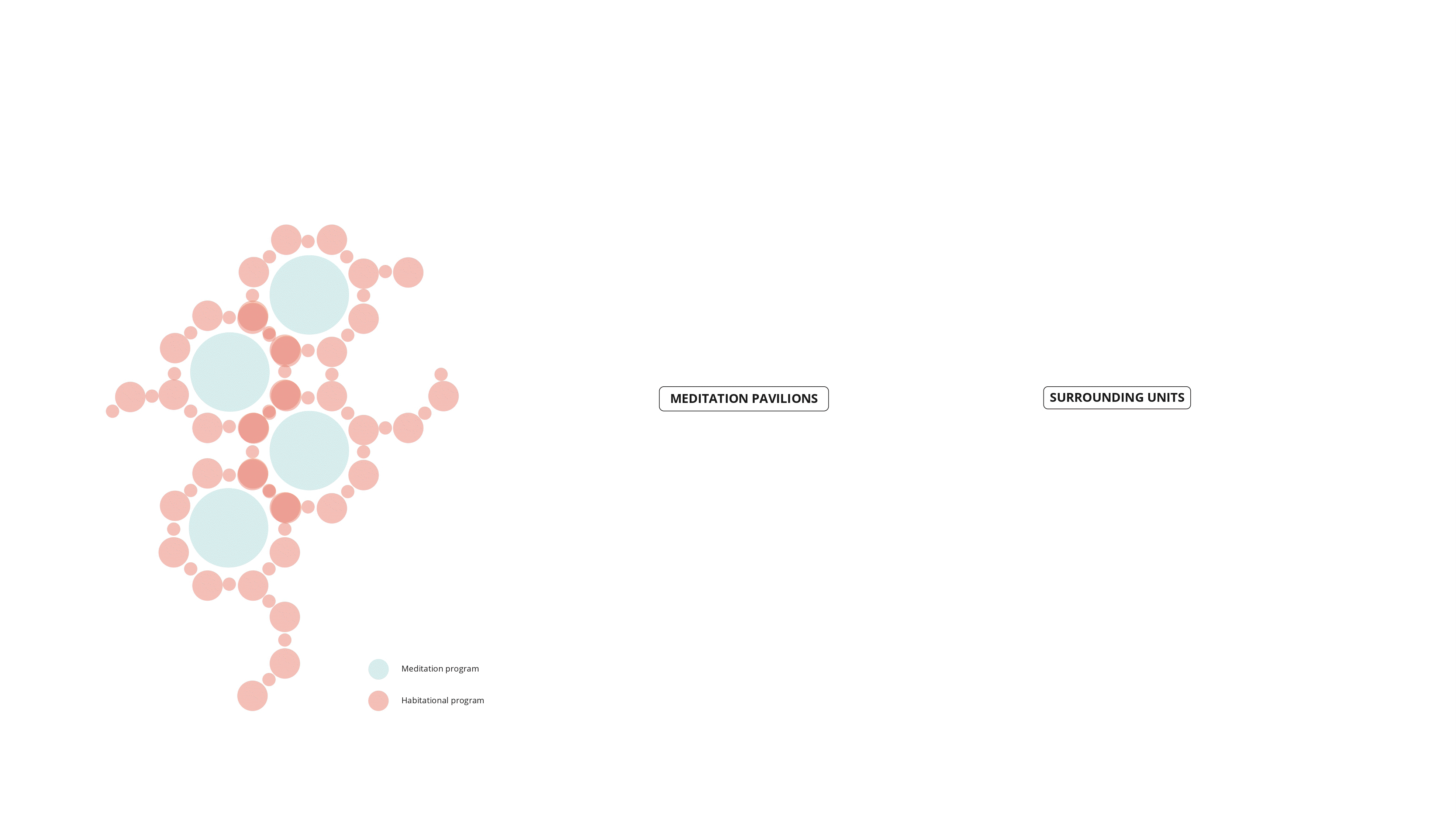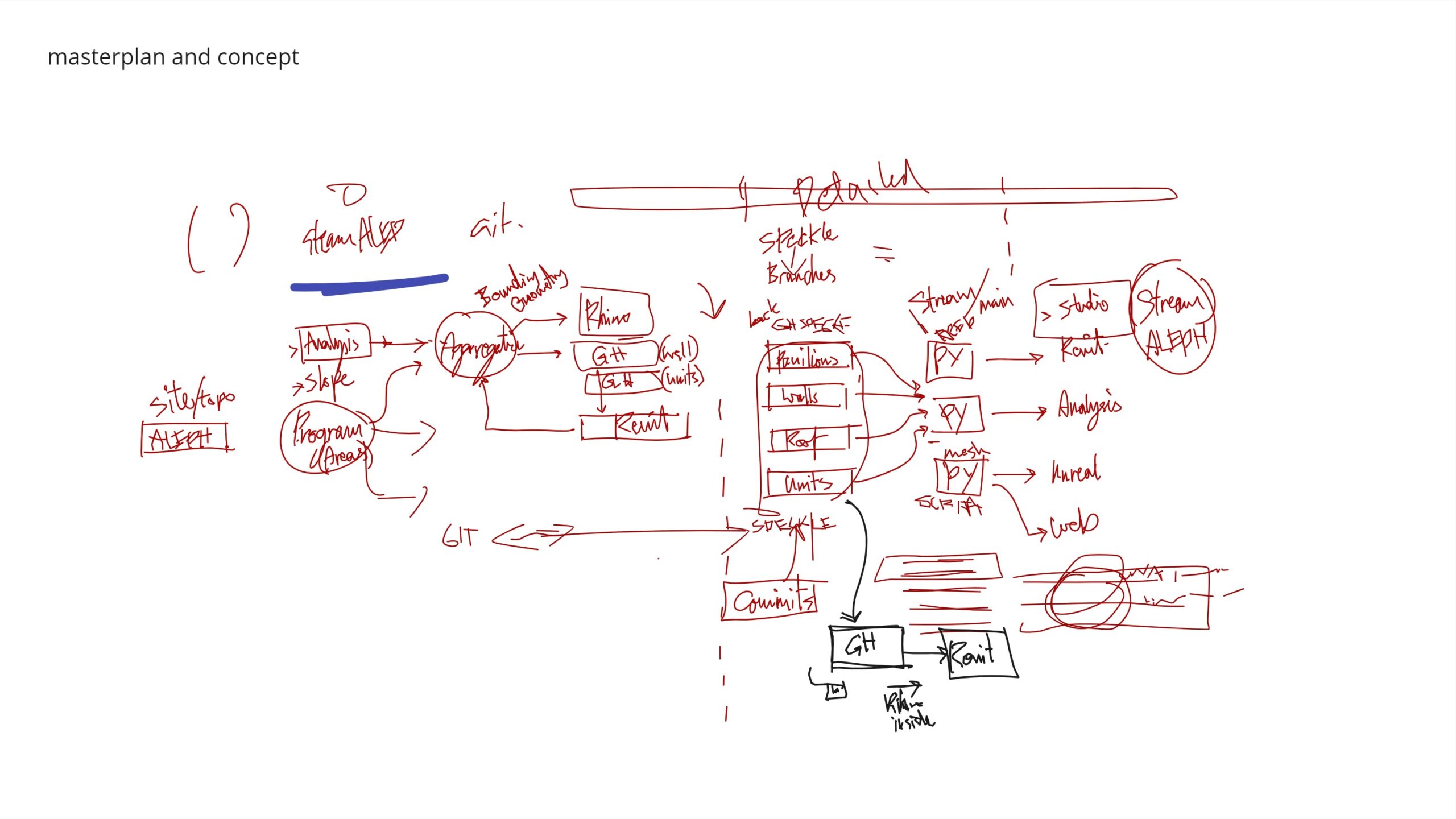As part of the studio project brief, Meditation and relaxation as well as habitational were the chosen programs for the Martian Colony to develop.

The proposal resulted in 4 main central pavilions, which would generate an ascending path within them, and at the same time, serve as main placeholders for the modular habitational units, which are placed around them.

The meditation program consists of four pavilions themed around Earth, Water, Fire, and Air, each with its unique layout and activities. Within these pavilions, three main categories of units are assigned:
1. Habitational Units: These are single-story units designed to accommodate four people each.
2. Buffer Units: These units serve common purposes such as kitchens and labs, and are designed with two stories to facilitate adaptation to sloped terrain.
3. Support Units: These units connect the habitational and buffer units, housing secondary facilities like toilets, storage areas, and power stations.
These categories will be translated into Revit families during the design process.

and lastly the breakdown of the layers in which the project consists, which will later be crucial for the organization of the workflow.

As part of the team workflow and to optimize work, both parts of the program were treated separately, which later we merged into a unique centralized file, from where we made all of our imports for rhino inside revit.

These are the first workflow was outlined

And this was the final workflow that guided the whole project fron beginning to end.
3 main stages are identified during this process.
Masterplan and concept
Detailed design
Documentation

during this stage, and since the design depended on an aggregation driven by fields, a repository was created for all team members to access the files. Then, work was divided as follows:
Slope rules to get the directive curves that will later guide the aggregation
Field-driven aggregation with its separate set of rules for form finding
Since the project is based on a kit of parts, units were designed separately, and later introduced as revit families for documentation and as speckle objects to the different streams designated to visualizations (unreal) and deliverables to the studio branches with metadata.
Once the form finding stage was finished, branches were made form the final aggregation. The fact that the habitational program was separated from the meditation one, was favourable for the division of tasks.
With the outline of the units ready, work was divided as follows.
Meditation branch:
- Walls and roof + terrain
- Floors and interior design
Units:
- Units detailed design
- Units interior design
Once the detailed design was finalized, an “Assembled file” was created. The purpose of this file is to contain all geometries from all scripts. This file would work in parallel with is grasshopper “Assembled file”, deconstructing all geometries and reconstructing them as speckle objects with attributes, which would later be sent to different streams, according to what it was needed
Video Presentation

